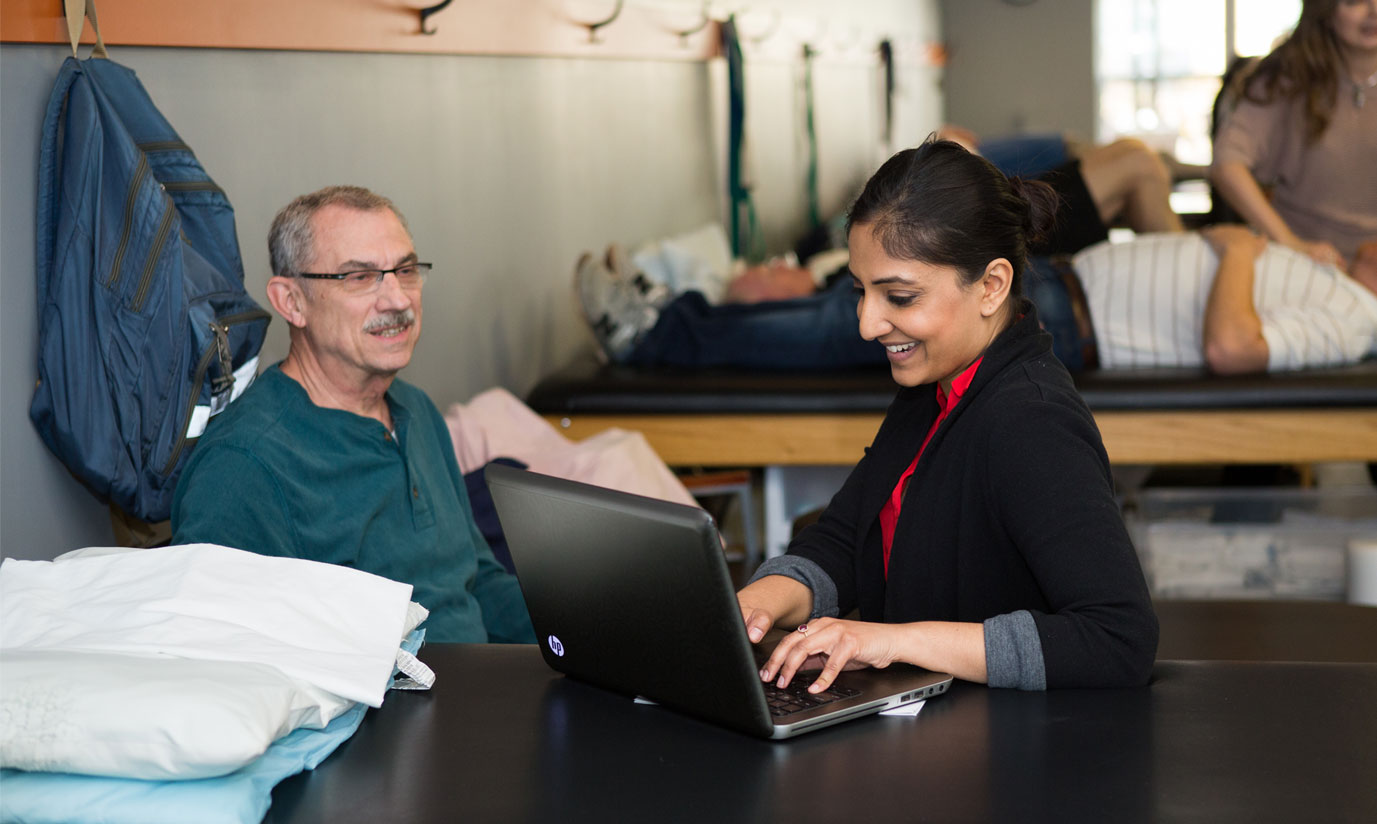
GERIATRICS - Tai Chi for Physical Therapists and Physical Therapy Assistants Working with Older Adults
-
Register
- Non-Member - $200
- PT Member - $120
- PTA Member - $120
- Student - $120
- Post-Professional Student - $120
- Staff - Free!
- *Further discounts may apply once you log in.
Tai Ji Quan (Tai Chi Ch’uan), or simply Tai Chi, is an age-old Chinese meditation and martial art practice used throughout the world for its many health benefits. Tai chi is a form of qigong (‘energy cultivation’) that integrates mind/body principles to cultivate a balanced life. Tai chi is a safe, enjoyable, light-to-moderate aerobic physical activity that offers numerous physical (strength, balance, gait/mobility), mental (cognition, depression), and social (well-being, quality of life) benefits for older adults. As a lifestyle medicine exercise, physical therapy (PT) professionals – indeed all clinical, public health and Tai Chi for Physical Therapists and Physical Therapist Assistants Working with Older Adults by Kristine M. Hallisy, PT, DSc community fitness providers, can confidently recommend Tai Chi to the patients/clients and communities they serve. This monograph will describe Tai Chi, its evolution and historical elements, delineate its many evidence-based health benefits and empower physical therapy professionals to maximize its use when working with older adults in both clinical and community practice. Tai Chi is a viable biopsychosocial tool for the treatment of noncommunicable diseases confronting older adults in the 21st century. If harkened back to its traditional roots, tai chi has the power to reconnect the mind-body-spirit and help heal humanity. It is a valuable tool for physical therapy professionals.
Learning Objectives:
Upon completion of this monograph, the course participant will be able to:
1. Describe the historical evolution and major lineages of Tai Chi and how this ancient Chinese practice has emerged as a 21st century holistic mind-body health promotion and wellness exercise.
2. Explain Traditional Chinese Medicine terminology and Tai Chi tenets (principles) and how they correlate to modern guidelines of Tai Chi practice. Link these Tai Chi tenets and guidelines to their purpose in physical therapy practice, i.e., weight separation is relevant to balance and postural control.
3. Delineate methods of Tai Chi practice and describe implementation of Tai Chi practice including biomechanical, functional, and therapeutic applications.
4. Appraise the state of aging and health in America and how the health benefits of Tai Chi can be used as a tool to combat the many noncommunicable diseases that cause significant mortality and morbidity in older adults (evidence-based practice).
5. Outline the process for becoming a Tai Chi practitioner and instructor including strategies for the use of Tai Chi in physical therapy practice (e.g., outcome tools, documentation, and billing in a variety of practice settings) and community-based group exercise programs. Discuss the impact of COVID-19 on the delivery of live, virtual, and group Tai Chi programs.
6. Utilizing the World Health Organization’s (WHO) International Classification of Function, Disability and Health (ICF) Model and the Centers for Disease Control and Prevention (CDC) Stopping Elderly Accidents Deaths and Injuries (STEADI) program in a case study model, screen older adults and implement Tai Chi as an evidence-based falls prevention tool. (NOTE: This includes the use of Tai Chi mind/body skills and Basic Moves, motor learning theory for teaching older adults and Sherrington’s best practice guidelines of exercise for fall prevention and the National Council on Aging (NCOA) Tai Chi exercise dosing parameters).
7. Outline the 5 APTA competencies for health promotion and wellness in physical therapy practice and incorporate Tai Chi as a tool to help older adults meet national physical activity guidelines.
8. Utilize national resources, such as the NCOA and the CDC, to find and implement strategies to refer older adults to community evidence-based falls prevention and Tai Chi programs in your area.
9. Describe the process for establishing a community-based group Tai Chi program (e.g., liability, pre-participation screening, readiness to engage in Tai Chi, classroom set up, and format).
10. Describe mechanisms of action for Tai Chi, i.e., how does it work? (e.g., physiologic lifestyle medicine, neural (brain changes), energetic, genetic).
Authors:
Kristi Hallisy,PT, DSc
Co-Editors
Amber Kilgore, PT, DPT, Board Certified in Geriatric Physical Therapy, Staff Physical Therapist, UPMC Mercy Hospital, Pittsburgh, PA
Barbara Billek-Sawhney, PT, DPT, EdD, Board Certified in Geriatric Physical Therapy, Professor, Slippery Rock University, Doctor of Physical Therapy Program, Slippery Rock University, Slippery Rock, PA

Kristi Hallisy
PT, DSc
Dr. Hallisy is an Associate Professor at the University of Wisconsin-Madison, Doctor of Physical Therapy (DPT) program. Dr. Hallisy’s education includes a BS (PT) from the University of Wisconsin-Madison (1984), MS (Kinesiology) from the University of Michigan-Ann Arbor (1992) and DSc (PT) from Andrews University in Berrien Springs, MI (2011). Teaching responsibilities at the University of Wisconsin-Madison DPT include: musculoskeletal coursework, orthotics, health promotion and wellness. This is coupled by independent study in tai chi and research practicums. Dr. Hallisy is the Director of Mentoring for the University of Wisconsin-Health and Meriter Unity Point Orthopaedic Residency program. In 2008, she developed a tai chi–based group Movement Awareness and Exercise Program for Persons with Chronic Conditions for the University of Wisconsin-Health Interprofessional Pain Clinic. Dr. Hallisy is an orthopaedic certified specialist (OCS) with a wide range of PT expertise that includes: manual therapy (CMPT), exercise (CEEAA), and movement strategies (tai chi, qigong, yoga) to help physical therapy professionals promote optimal aging and wellness in their patients/clients and communities.
Course Instructions
- Click on the Contents tab to watch the course recording.
- Click the Take Quiz button to complete the assessment. Learners will have 3 attempts to pass and must answer at least 70% of questions correctly.
- Click the View/Print Your Certificate button under the Certificate listing. You can view/print your certificate at any time by visiting the APTA Learning Center and clicking the CEU Certificate/Transcript link on the left-hand side of the page.
Need Assistance?
For assistance logging in, accessing activities, claiming credit, or for other questions or concerns, please e-mail learningcenter@apta.org.


